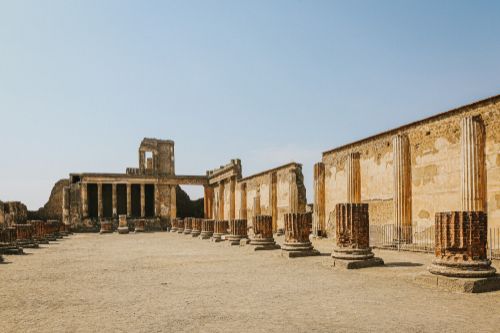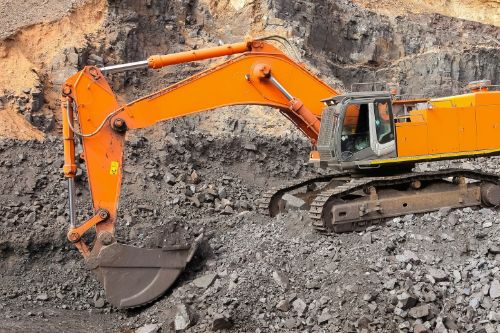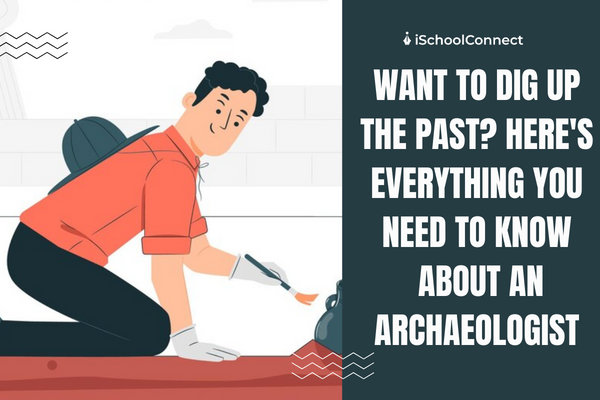Table of Contents
The science of archaeology blends knowledge from numerous subjects.
Did you know that identifying plant and animal remains is a field of expertise for some archaeologists? Others might collaborate with forensic scientists or geneticists to place the items’ blood or traces of plants. This enables them to learn what foods people prefer. What they were eating or what supplies they had for clothing and shelter. The climate can also be determined using plant and animal remnants.
Keep reading to know more!
Archaeology
Archaeology is the study of ancient and recent human past via artifacts. The million-year-old remains of our oldest human predecessors found in Africa may be studied by archaeologists. Or they might examine modern-day New York City structures from the 20th century. Archaeology examines the material remnants of the past to gain a thorough understanding of human culture.
An original viewpoint on human history and culture can be found in archaeology. We can learn more about past human habitation patterns and lifestyles through archaeology. Archaeologists study historical change while looking for patterns and justifications.
Archaeology Types

The field of archaeology is highly diverse. Most archaeologists concentrate on a particular area of the globe or research area. An archaeologist can gain competence in a specific topic through specialization. Some archaeologists focus on the study of stone tools (lithics), ancient plants (paleoethnobotany), human remains (bioarchaeology), and animals (zooarchaeology). Some archaeologists are experts in the methods used to locate, map, or examine ancient sites. The relics of human activity that are found below the water’s surface or along the beaches are studied by underwater archaeologists. The term “CRM” refers to the labor done by archaeologists to abide by local, state, and federal regulations.
Sites of Archaeology
Any location with tangible evidence of earlier human activity is considered to be an archaeological site. Archaeological sites come in wide different varieties. Without a documented history, prehistoric archaeological sites are those. They might consist of towns or cities, quarries, ancient cemeteries, rock art, camping grounds, and megalithic stone structures. A tiny prehistoric hunter’s collection of chipped stone implements can serve as a site.
Features, Ecofacts, and Artifacts
Even the tiniest archaeological site might have a wealth of essential data. Artifacts are anything that humans have created, altered, or used. To understand the individuals who created and utilized the artifacts, archaeologists examine them. At archaeological sites, features—non-portable artifacts—are crucial sources of knowledge. Features can include soil stains that reveal the locations of former fences, structures, or storage pits. Ecofacts are organic traces of human action. Archaeologists can learn about dietary habits and subsistence practices by studying plant and animal remnants.
Geology and Archaeology

The research by geology mentions crucial information on archaeology to uncover the past. The location of materials for stone tools, ceramics, and buildings can be determined using knowledge of rocks and minerals.
Geology, in a nutshell, influences archaeology. The longer response is that the strategies used to analyse archaeological sites are built largely upon geological ideas and techniques.
Assuming that the strata that hold the archaeology were the ground surface when it was being used is consistent with the archaeology’s guiding idea that sites form while they are being used on a daily basis. This is the case unless there are evident indications that something has been buried. Stratification can also be used to understand this, but that is a whole other topic.
In order to measure the horizontal and vertical placements of archaeology as we discover it, we use geology in this situation. An archaeologist can determine that the artefact was used by these persons at this specific time based on provenance, which is information about the thing’s past usage. It is simply speculation if not.
Context
In archaeology, context describes how objects relate to their environment. On an archaeological site, each artifact has a specific location. Before removing a relic from its discovery site, archaeologists note its precise position.
An ancient North American bison species that perished at the end of the last Ice Age was discovered by archaeologists in the 1920s to have a stone spear point stuck between its ribs. It put an end to a dispute that had lasted for years. The spear point proved beyond a shadow of a doubt that humans had lived in North America since the late Pleistocene. This was demonstrated by the relationship or association between the artifact and the bison skeleton.
Key Takeaways
- Archaeology pertains to the study of various ancient cultures.
- There can be multiple fields of study in archaeology.
- A specific context in archaeology refers to how objects can relate to each other.
We hope this blog was informative. If so, please share your views in the comments below. Click here to reach out to us for more information. We would be happy to assist you with your queries.
FAQS
Q1. How long does it take to become an archaeologist?
Ans. Four years of college are the bare minimum of education required to work in the subject of archaeology (BA or BS). Archaeologists typically have anthropology or archaeology as their majors. They also receive instruction in laboratory and field methods for archaeology.
Q2. Are gloves used while dealing with antiques?
Ans. Generally, archeologists use white cotton gloves while handling antiques.
Q3. Who is the Father of Archaeology?
Ans. Theodore Flinders is the Father of Archaeology is Petrie. In the 1880s, Petrie was the first person to conduct a scientific investigation of the Great Pyramid in Egypt.







